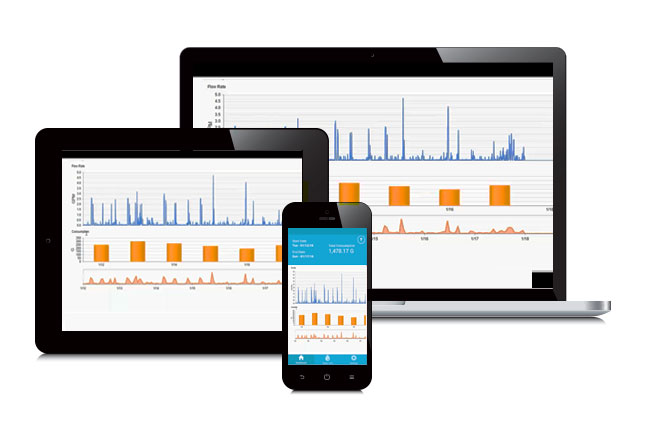Evaluation Management (EM)

Evaluation and management coding (commonly known as E/M coding or E&M coding) is a medical coding process in support of medical billing. Practicing health care providers in the United States must use E/M coding to be reimbursed by Medicare, Medicaid programs, or private insurance for patient encounters.[citation needed]
E/M standards and guidelines were established by Congress in 1995 and revised in 1997. It has been adopted by private health insurance companies as the standard guidelines for determining type and severity of patient conditions. This allows medical service providers to document and bill for reimbursement for services provided.
E/M codes are based on the Current Procedural Terminology (CPT) codes established by the American Medical Association (AMA).
In 2010, new codes were added to the E/M Coding set, for prolonged services without direct face-to-face contact.
How to Evaluate Management Training
The process many training and development specialists use for measuring the effectiveness of management training starts with a needs assessment to determine the skills managers already have, the skills they lack and the best delivery mode for workplace training. However, an extensive evaluation of management training also examines whether managers and supervisors put their learning to use and measures the results of the practical application of new techniques picked up during training.
Entry-level supervisors and new managers need basic leadership training, but small companies often have to combine training sessions due to limited resources. Therefore, evaluating management training should begin with preliminary matters such as the type of training necessary, the learning capacity of attendees and the experience levels of supervisors and managers.
Theory
Management or leadership training offers practical steps supervisors can immediately put to use. However, to be most effective, participants also learn the theoretical foundation for management techniques covered during training. For example, management-training topics on how to improve employee performance and supervisor-employee communication suggest that managers routinely provide constructive and positive feedback to their direct reports. Employee feedback is often responsible for enhancing employees’ trust in their supervisors because they realize regular and continuous feedback is a supervisor’s effort to ensure they perform at optimum levels and satisfy their desire to succeed. Management training that provides both theory and practical application receives high marks.
Participation
Leadership training needs to be participatory. Evaluating leadership training involves determining whether attendees feel comfortable enough to freely participate in training activities. Training that addresses complex topics beyond the comprehension level of entry-level supervisors and managers or facilitators whose platform skills aren’t up to par can discourage attendees and inhibit their responses and participation. Therefore, the most skillful training specialists work hard to engage students’ participation through a variety of adult learning methods.

Delivery
Classroom instruction, Web-based training and self-paced independent study are among adult learning methods. For management and leadership training, role-play — or experiential learning — also is an effective means to teach adults about workplace topics. Training specialists who thoroughly understand the topic, their audience and how to improve their students’ grasps on certain topics, use role-playing sessions to teach behavioral-based topics, such as how to conduct performance appraisals.
Application
How well supervisors and managers put to use what they learn in the classroom or online is a testament to the effectiveness of the training. Measuring the proper application of management techniques could involve polling training participants before and after training. This gives supervisors and managers enough time to apply best practices such as continuous feedback throughout the evaluation period instead of just at performance appraisal time.
Evaluation involves the assessment of the effectiveness of the training programs. This assessment is done by collecting data on whether the participants were satisfied with the deliverables of the training program, whether they learned something from the training and are able to apply those skills at their workplace. There are different tools for assessment of a training program depending upon the kind of training conducted.
Since organisations spend a large amount of money, it is therefore important for them to understand the usefulness of the same. For example, if a certain technical training was conducted, the organisation would be interested in knowing whether the new skills are being put to use at the workplace or in other words whether the effectiveness of the worker is enhanced. Similarly in case of behavioural training, the same would be evaluated on whether there is change in the behaviour, attitude and learning ability of the participants.
Benefits of Training Evaluation
Evaluation acts as a check to ensure that the training is able to fill the competency gaps within the organisation in a cost effective way. This is specially very important in wake of the fact the organisations are trying to cut costs and increase globally. Some of the benefits of the training evaluation are as under:
Evaluation ensures accountability – Training evaluation ensures that training programs comply with the competency gaps and that the deliverables are not compromised upon.
Check the Cost – Evaluation ensures that the training programs are effective in improving the work quality, employee behaviour, attitude and development of new skills within the employee within a certain budget. Since globally companies are trying to cut their costs without compromising upon the quality, evaluation just aims at achieving the same with training.
Feedback to the Trainer / Training – Evaluation also acts as a feedback to the trainer or the facilitator and the entire training process. Since evaluation accesses individuals at the level of their work, it gets easier to understand the loopholes of the training and the changes required in the training methodology.
Not many organisations believe in the process of evaluation or at least do not have an evaluation system in place. Many organisations conduct training programs year after year only as a matter of faith and not many have a firm evaluation mechanism in place. Organisations like IBM, Motorala only, it was found out, have a firm evaluation mechanism in place.
The Way Forward
There are many methods and tools available for evaluating the effectiveness of training programs. Their usability depends on the kind of training program that is under evaluation. Generally most of the organisations use the Kirk Patrick model for training evaluations which evaluates training at four levels – reactions, learning, behaviour and results.
After it was found out that training costs organisations a lot of money and no evaluation measures the return on investment for training, the fifth level for training evaluation was added to the training evaluation model by Kirk Patrick which is called as the ROI.
Most of the evaluations contain themselves to the reaction data, only few collected the learning data, still lesser measured and analysed the change in behaviour and very few took it to the level of increase in business results. The evaluation tools including the Kirk Patrick model will be discussed in detail in other articles.
Emergency Medicine Coding(ED)

Emergency Medicine presents a unique set of challenges for coding. This fast paced high-volume specialty encompasses elements of primary care E&M services up to trauma services. Surgical procedures are performed and diagnostic tests are ordered. Diagnostic coding is critical to present the medical necessity for each. Documentation must be precise because nothing can be assumed. Unfortunately the physicans’ notes are not always expansive as they need to be; discrepancies with the doctors’ notes, the nursing notes and the doctors’ orders are commonplace. Considering the number of patient visits, the ED coders must have an intimate understanding of what happens in the ED and they must be continuously inserviced and Q/A reviewed to avoid institutionalizing misunderstandings and thus making coding errors an “intergenerational” legacy. Locum tenens and part-time non-equity doctors often fill the schedule. Unlike most other specialties, Emergency Physicians generally have no employees. Their coding is done remotely, usually by billing companies or hospital medical records staff. Blling companies are in-business to make a profit and their operation also involves billing, data entry, accounts receivable follow-up, payment posting, secondary and balance billing, etc. Unlike a dedicated coding company, billing companies can only give the coding function limited resources and attention. More and more billing companies send their coding and back-office work to subcontractors in developing nations overseas to bolster their profit margins. Only a fraction of overseas coders are certified, and even fewer have multiyear emergency medicine coding experience. Hospital HIM directors and managers have to priortize their limited resources, and the bulk almost always goes to the higher-dollar-valued inpatient services where one discharge can be equal to 100 or more ED visits. All this adds-up to the potential for suboptimal coding, missed billable services, backlogs, compliance exposure, and lost revenue.
Emergency Medicine Coding Background
1.Directed by a nationally recognized emergency medicine coding and reimbursement expert who is both a certified coder and an emergency room registered nurse.
2.Decades of experience coding for and training emergency medicine physicians to improve documentation and coding compliance.
3.Member of the American College of Emergency Physicians Subcommittee on Coding and Nomenclature.
4Expert witness for the Federal government on emergency medicine coding fraud and abuse.
5.Trained thousands of emergency physicians how to improve documentation and hundreds of coders how to code emergency medicine.
6.Expert on ambulatory payment classification system and facility coding in the emergency department.
Emergency Medicine Coding Need well trained emergency medicine coders for both professional and facility charges in the emergency department are hard to find, expensive to hire, difficult to keep, and their “care-and-feeding” is costly.
Few emergency medicine coders are certified, a symbol of career commitment and quality coding.
Coding guidelines for the facility and professional services are complex, change often and are different for the two segments.
Coder turnover and absences create cash flow peaks and valleys.
With so few coders specializing in this niche, it is difficult to find and hire experienced emergency medicine coders, even in large metropolitan areas. EDs in smaller communities and tight labor markets have trouble filling openings and often must offer pricy sign-on bonuses or other incentives that have the potential to create friction with the existing staff..
Facility coding guidelines have no national standard. Those guidelines created by individual hospitals often undervalue services.
Emergency Medicine Coding Solution
TCN’s emergency medicine coding services address both facility and professional charges.
Your professional and/or facility emergency medicine coding will be completed within 2-to-3 workdays if sent daily.
Send us cases by FedEx/UPS or electronically, or we can remotely access your electronic medical record.
At no additional charge, we will identify any of your doctors’ documentation deficiencies to improve the quality of your medical records and optimize reimbursement.
All coding is done in the US of A by certified coders with a minimum of 3 years emergency medicine coding experience, who have passed our proficiency tests and maintain a 95% accuracy.
Our volume-driven per-visit pricing model is inexpensive and our team of coders stabilizes cash flow performance. You pay only for what you need, and never have to worry about sick leave, vacations, or family leave.
A practical solution for your emergency medicine coding needs to improve coding and documentation.
TCN recommends ACEP Facility Coding Protocols to improve facility coding consistency and increase cash flow.
Emergency Medicine Coding Services

Ongoing emergency medicine coding services.
Temporary emergency medicine coding services for vacation or sick leave coverage.
Backlog coding resolution services.
Compliance reviews.
Hospital nursing staff documentation training.
Physician documentation training.
Nursing staff documentation training.
Hospital coding protocols.
Physician group documentation deficiency reporting.
Emergency medicine coding “helpline” services.
Specialty coding Training
Home
Topics covered:
• Ability to read and abstract physician office notes and procedure notes to apply correct ICD-10-CM, CPT, HCPCS Level II and modifier coding assignments
• Evaluation and management (both the 1995 and 1997 Documentation Guidelines)
• Rules and regulations of Medicare billing including (but not limited to) incident to, teaching situations, shared visits, consultations and global surgery
• Coding of surgical procedures performed by ED physicians such as thoracentesis, laceration repair, fracture care, foreign body removal, etc.
• Coding of moderate sedation
• Time-based coding
• Medical terminology
• Anatomy and physiology
• Live charts explanation and review
Difference between ED facility and ED professional coding:
CMS identified four (4) basic models in use when determining facility levels;
• Number or type of staff interventions
• Time
• Point system
• Patient severity
Time is not considered a component for professional fee Evaluation & Management coding in the emergency department
Critical care codes also differ for facilities. CMS allows reimbursement only for 99291 Critical care, evaluation and management of the critically ill or critically injured patient; first 30-74 minutes, regardless of the time spent attending to the patient’s medical needs In professional coding Critical care codes based on total time spend with patient. 99291-Initial 30-74 minutes +99292 x 1 Critical care, evaluation and management of the critically ill or critically injured patient; each additional 30 minutes (List separately in addition to code for primary service)

Why choose us Coding Trainings
1. Having More Than 15 Years Of Experience In Medical Coding Training
2. 13+ Years Of Experience In Real-Time Industry
3. 100% Lab Facility For Every Student By Experienced Lab Coordinators
4. Training On Live Projects And Assignments
5. 100% Placement Assistance
6. Lifetime Access To Latest Content
7. 24 X 7 Trainer’s Support On Online Forum
8. Giving Credits For Real Time Internship
9. Get Full Access To Paid SEO Tools
10. Become A Certified Professional
How much Does Medical Coding Training Fees Hyderabad
Fees for Medical coding 6,000+ only if ur Looking for All training 12,000+ Classroom training and internship training with live projects
S Nandini reddy
★★★★★ 1 days ago
Best institute from recent times to learn CPC with live projects Nice
Reply Like
shiva bkb
★★★★★ 8 days ago
Well experienced faculty for medical coding highly recommended for training
Reply Like
javeed ahmed
